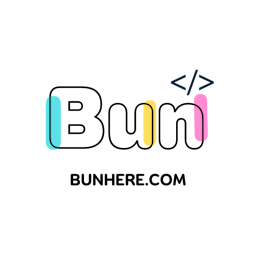- Published on
Basic Overview of SEO for Fresher Web Developers
Overview

SEO stands for Search Engine Optimization, or search engine optimization. SEO is an important process in web development. A website that is SEO-optimized will be more likely to appear at the top of the search results, thereby attracting more visits.
But for a Fresher Dev, you're gonna focus on how to create/develop a website to ensure that it's functional or that the interface is eye-catching.
In this article, I will only discuss the basic concepts/ approaches to SEO in web development.
Why is SEO important?
Surely when creating a website, everybody wants their website to be known to more people. SEO integration helps:
Increase visibility in search results: SEO helps your website appear at the top of the search results, thereby attracting more visits.
Increase website traffic: SEO helps you reach more users, thus increasing website traffic.
Increase Revenue: For ecommerce sites, SEO can help you increase your revenue by helping you reach more potential customers.
SEO Integration Techniques
Content Optimization
Content is the most important element of SEO. Content needs to be optimized for target keywords, high quality and user-friendly.
Notes when optimizing content:
Use target keywords naturally in content.
Writing high quality, useful and engaging content.
Create new content regularly. Continuously updating website content also increases website accessibility.
Website Structure Optimization
The site structure needs to be clear and easy to navigate. Web developers can optimize the site structure by:
Use a clear hierarchy.
Use the appropriate title and description tags.
Create high-quality internal links.
Source Optimization
Use alt and title tags for images.
Use meta tags for websites and pages.
Use robots.txt tags to control how search engines collect website data.
Optimize page loading speed
Quick page loading speed will help improve your site's ranking. Some notes when optimizing page loading speed:
Use images of the right size.
Use optimized CSS and JavaScript files.
Using page loading speed optimization tools.
Basic Website Optimization
In this article I aim to the subject is Fresher dev so to be more visualizable in addition to the theoretical definitions above, this section introduces the most basic ways to apply SEO.
Use clear hierarchy
Clear hierarchy helps search engines better understand the content of a website.
You can use heading tags (h1, h2, h3,...) to hierarchize the content of the site.
<html lang="en">
<head>
<title>Your title</title>
<meta name="description" content="Description of the site that provides information about ...">
<meta name="keywords" content="key work 1, key work 2, ...">
</head>
<body>
<h1>Homepage</h1>
<p>This website provides information about ...</p>
<h2>Links to other pages</h2>
<ul>
<li><a href="about.html">Introduce</a></li>
<li><a href="products.html">Product</h2></li>
<li><a href="contact.html">Contact</a></li>
</ul>
</body>
</html>
Use meta tags
The meta tags provide information about the site for search engines. You should use meta title tags, meta description and meta keywords for all websites.
<html lang="en">
<head>
<title>Homepage</title>
<meta name="description" content="Description of the site that provides information about ...">
<meta name="keywords" content="key work 1, key work 2, ...">
</head>
<body>
<img src="image.webp" alt="Logo of the website">
<img src="product.webp" alt="Product image">
</body>
</html>
In addition, title tags and description tags are important factors in attracting users to a website. You should note that the names and contents of these tags are as appropriate as possible.
Don't try to insert target keywords into the source code. Instead, use target keywords naturally in text and tags.
Use title tags and description tags with a length of at least 50 characters. The longer title tags and description tags will give search engines more information about your site.
Optimize page loading speed
Images
Images can help improve the user experience and attract users to the site. Use alt and title tags for images, which will help search engines better understand the content of images.
In addition, the use of images with too high quality will also affect the load of the content of the site. Choose the right image quality.
Use optimized CSS and JavaScript files
CSS and JavaScript files can slow the page loading speed of a website. Optimization tools can be used to reduce the size and improve the performance of these files.
<script src="script.js"></script>
<script src="style.css"></script>
to
<script src="script.min.js"></script>
<link rel="stylesheet" href="style.min.css">
Compliance with Google guidelines
Google provides guidelines on how to optimize your website for SEO. Follow these guidelines to improve your site's ranking.
Search Engine Optimization (SEO) Starter Guide
End.
I am always looking for feedback on my writing, so please let me know what you think. ❤️

